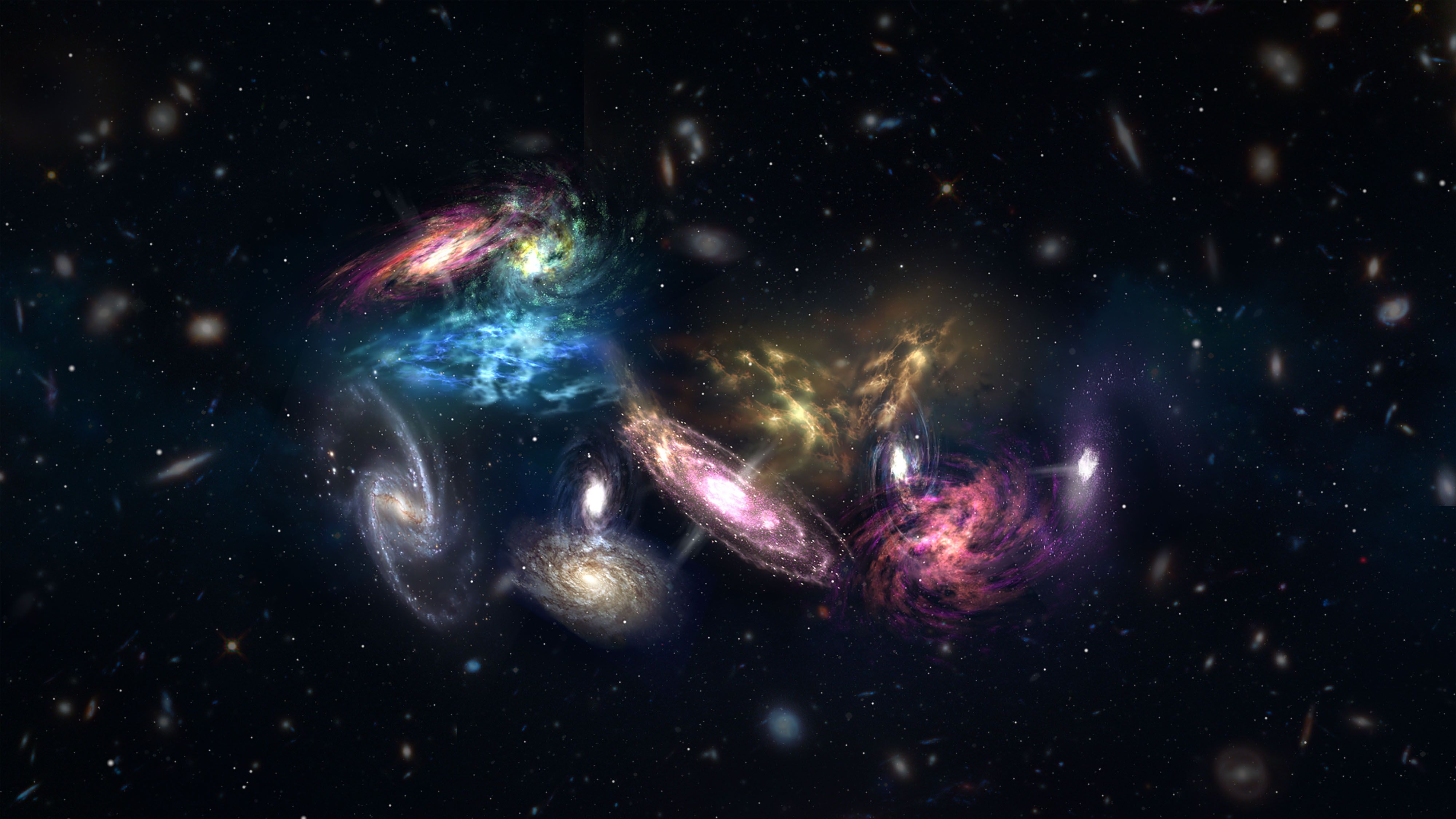Looking deep into the observable Universe – and hence, back to the earliest periods of time – is an immensely fascinating thing. In so doing, astronomers are able to see the earliest galaxies in the Universe and learn more about how they evolved over time. From this, they are not only able to see how large-scale structures (like galaxies and galaxy clusters) formed, but also the role played by dark matter.
Most recently, an international team of scientists used the Atacama Large Millimeter-submillimeter Array (ALMA) to observe the Universe when it was just 1.4 billion years old. What they observed was a “protocluster”, a series of 14 galaxies located 12.4 billion light-years away that were about to merge. This would result in the formation of a massive galaxy cluster, one of the largest objects in the known Universe.
The study which described their findings, titled “A massive core for a cluster of galaxies at a redshift of 4.3”, recently appeared in the journal Nature. The study was led by Tim Miller – an astronomer from Dalhousie University, Halifax, and Yale University – and included members from NASA’s Jet Propulsion Laboratory, the European Southern Observatory (ESO), Canada’s National Research Council, the Harvard-Smithsonian Center for Astrophysics, the National Radio Astronomy Observatory, and multiple universities and research institutions.
